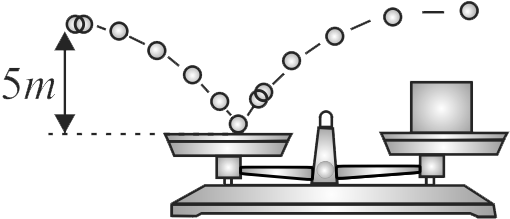363596
A stream of glass beads, each with a mass of \(15\,g\), comes out of a horizontal tube at a rate of 100 per second. The beads fall a distance of \(5\,m\) to a balance pan and bounce back to their original height. How much mass must be placed in the other pan of the balance to keep the pointer at zero?
363596
A stream of glass beads, each with a mass of \(15\,g\), comes out of a horizontal tube at a rate of 100 per second. The beads fall a distance of \(5\,m\) to a balance pan and bounce back to their original height. How much mass must be placed in the other pan of the balance to keep the pointer at zero?
363596
A stream of glass beads, each with a mass of \(15\,g\), comes out of a horizontal tube at a rate of 100 per second. The beads fall a distance of \(5\,m\) to a balance pan and bounce back to their original height. How much mass must be placed in the other pan of the balance to keep the pointer at zero?
363596
A stream of glass beads, each with a mass of \(15\,g\), comes out of a horizontal tube at a rate of 100 per second. The beads fall a distance of \(5\,m\) to a balance pan and bounce back to their original height. How much mass must be placed in the other pan of the balance to keep the pointer at zero?